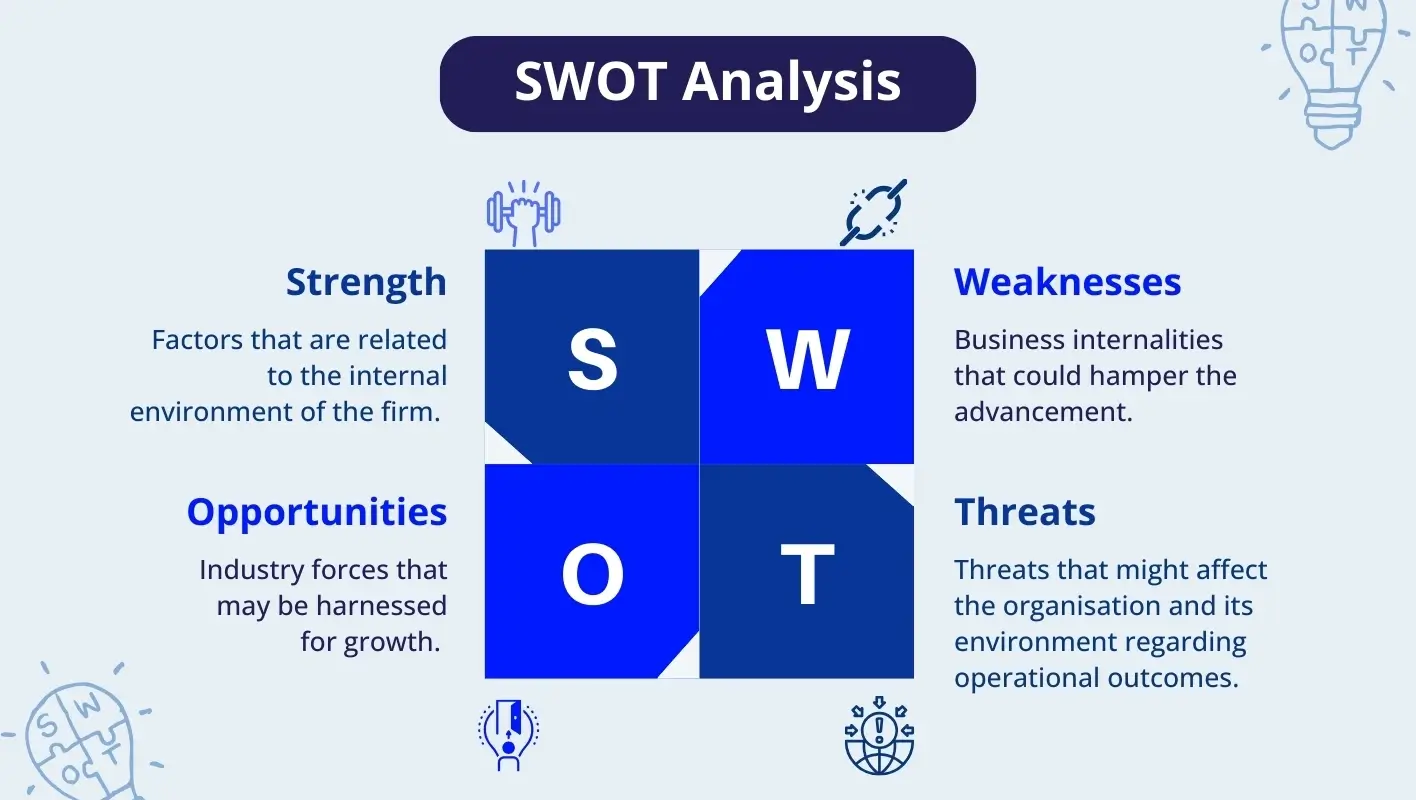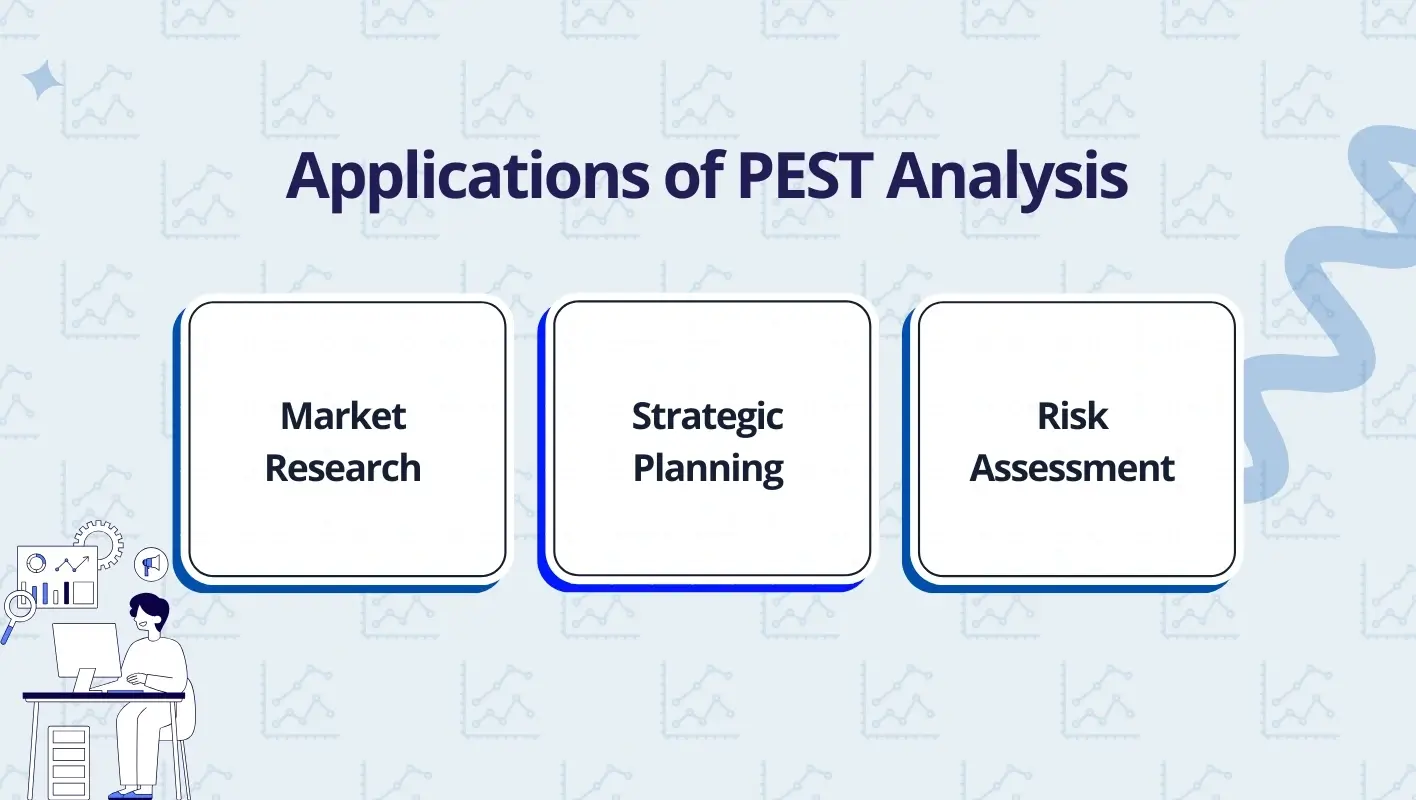Larger the Assignment, Bigger the Savings For Your Pocket!

Management decision-making is the cornerstone of managing an organisation or a project and requires clarity of internal and external factors. These factors have transformed tools such as strengths, weaknesses, opportunities, threats, and the picking of environment scanning tool (PEST) analysis into beneficial frameworks. Although many management writers use SWOT and PEST analysis interchangeably, as if bundled in one method, they are not. Selecting the right tool – or selection of tools – can be the difference between your objectives' success and failure.
In this all-encompassing guide, I, assignment expert – Chris Lewis – will assist you in evaluating and being able to distinguish each framework, become acquainted with how they work and be able to combine all these frameworks for an efficient analysis. If you are a student writing a paper or a businessperson designing a project, you will find this guide helpful at every step.
S.W.O.T analysis is a strategic planning method that aims to identify the internal aspects, including strengths, weaknesses, opportunities and threats available for an organisation. It gives an endogenous and exogenous perspective of things that lead to success or failure.

Strengths: Factors that are related to the internal environment of the firm. Example: Reasons for the brand name include a giant company with a positive image, skilled workforce or proprietary technology.
Weaknesses: Business internalities that could hamper the advancement. Examples: are inspector availability, institutional insufficiency, and costly or obsolete equipment.
Opportunities: Industry forces that may be harnessed for growth.
Example: Speaking of the drivers, there can be unfamiliar markets, new technologies, or a government's action.
Threats: Threats that might affect the organisation and its environment regarding operational outcomes.
Example: The entrance of new players into the market, shift in government policies, market volatilities.
SWOT analysis is versatile and can be applied to various scenarios, including:

Business Strategy Development: This involves discovering prospects for development or potential for enhancement.
Project Planning: Evaluating the feasibility and the possibility of risks.
Personal Development: Appreciating self and others' talents and weaknesses.
PEST analysis evaluates external environmental factors under four categories: The four types of analysis are Political, Economic, Social, and Technological. This is most valuable for determining the meso-level factors that affect an organisation or a project.

Political Factors: Politics, markets and trading, power and stability, taxes, and legalities regarding the environment.
Example: Foreign investment may be obtained if a country has a stable government.
Economic Factors: Interest rate and inflation rate, unemployment rate, size of the market and general economic growth.
Example: Growth opportunities exist when there is economic growth.
Social Factors: People's culture, regimens, age, and buying pattern.
Example: There may be changes in the number of health-inclined consumers, which may result in a change in the number of individuals buying fitness-related products.
Technological Factors: The Innovations – Technology – R&D – Infrastructure categories are of primary importance.
Example: Artificial intelligence integration is revolutionising organisations in all regions.
PEST analysis is ideal for understanding the external environment, particularly in the following areas:

Market Research: Tokens about the factors that may affect market functions.
Strategic Planning: The process of matching organisational strategy with the external environment.
Risk Assessment: Preventing external threats as a way of managing risk.
SWOT and PEST analyses are analytical tools, but the focus, objectives, and methods differ. Here's a closer look:
| Parameters | SWOT Analysis | PEST Analysis |
|---|---|---|
| Focus Area | Look at the business's positive and negative aspects: Strengths and weaknesses as well as opportunities and threats. | Completely covers the factors outside the organisation's environment only. |
| Purpose | SWOT Analysis is suitable for strategic planning since it provides a complete picture of any organisation. | PEST Analysis assists organisations in appreciating influences outside their decision-control circle. |
| Level of Detail | Divides complex types of arrangements into four types. | Focuses on such external factors, which require extensive research. |
| Applications | It can be used on the individual level and in the case of whole companies. | Fundamentally applied for market intelligence, competitive assessment and global business planning. |
Your First Order
Get 20% OFF!
It would also improve decision-making by identifying occasions that make using a SWOT analysis better than a PEST analysis.
You require a rushed SWOT analysis as it is.
Endogenous factors such as resources and capability have strong influences on the results.
Measuring the development or achievement of individual or company objectives.
The external environment has key influences on decision-making regarding activities.
Such as market research or going into new markets.
In addition to analysing the business environment in which the industry operates, the business should also seek to understand other outside forces that may exist within the same business environment and pose a threat to an industry.
SWOT analysis and PEST analysis are two of the most widely used tools for business analysis and planning, and in this section, the results of both studies are combined. Let's assume a renewable energy company is planning to expand globally:
Strengths: High technology and well-trained human resources.
Weaknesses: Fewer market access points across some markets.
Opportunities: There is an increasing need for support for green energy policy.
Threats: high rivalry, unstable price of raw materials.
Political: Government promotion policies in favour of renewable energy.
Economical: High fuel costs that enhance the utilisation of renewable energy sources.
Social: More coverage of global warming and climate change by programs and other forms of media.
Technological: Renewable energy storage technologies or clean energy storage technologies.
Integrating them into the understanding benefits the company by enabling it to develop an effective strategy that plays to its strength but controls environmental threats.
| Advantages of SWOT Analysis | Limitations of SWOT Analysis |
|---|---|
| Simple and easy to implement. | Lack of coverage of external environment analysis. |
| Helped achieve internal and external perceptions of the organisation. | The analysis's courses are obtained depending upon how the specific person or group does it. |
| Advantages of PEST Analysis | Limitations of PEST Analysis |
|---|---|
| Provides a good perspective of all the outside forces. | It takes a lot of time, and one must study to be in a good position. |
| It encourages the identification of intricate research and systematic thinking. | Lacks internal factors, which makes its applicability limited. |
Knowing the strengths and drawbacks of PEST and SWOT analysis, you can use them separately or in a single combination.
SWOT and PEST are both vital tools in strategy formulation; these two are, however, different, with each serving a specific end. While SWOT gives information on the internal and external environment, PEST focuses on the external environment in detail. As an assignment expert, I recommend using these tools together whenever possible. PEST is the first step to generate knowledge of the external operating environment, followed by using SWOT to match these results with firm contours. This must-layered approach may help provide businesses and individuals with the correct information.
Understanding the detailed differences between SWOT and PEST will create the edge in any academic work or organisational business strategy. If you need help with your management assignment, contact Quick Assignment Hub to provide solutions according to the assessments.